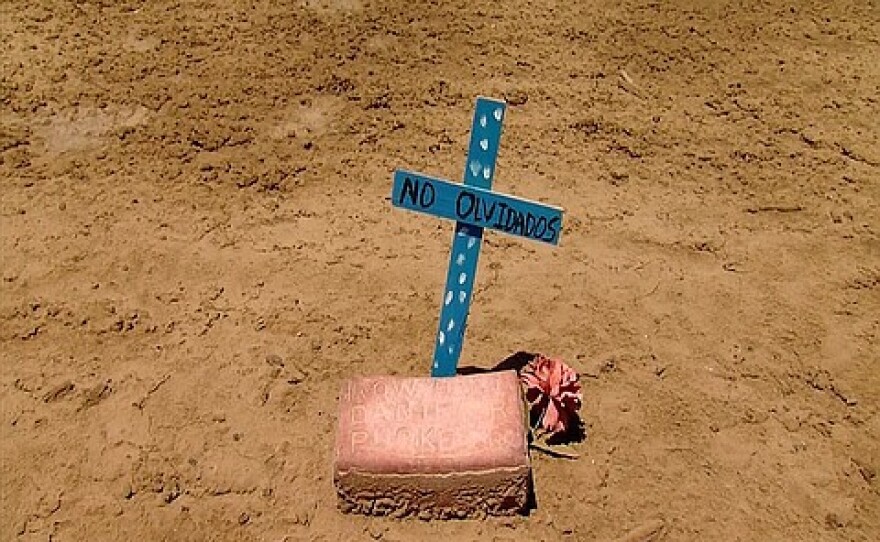Border agents at the Otay Mesa crossing are stepping up screening with biometrics. They're testing facial recognition and iris scanning as new ways of identifying people walking across the border. Civil liberties advocates say they're also testing the limits of privacy.
Otay Mesa processes thousands of vehicles each day. But many frequent crossers choose to walk across the border on their way to work, to visit family, or to go shopping. On a recent weekday morning, some of them were about to find out crossing the border now involves one more step.
Border agents helped pedestrians feed their travel documents into brand new kiosks. Then, if they were a U.S. citizen and their documents cleared, they were ushered across the border.
But the non-U.S. citizens were asked to stay put for a moment. They had to stand very still while a camera inside the kiosk scanned their face and eyes.
"This is a national security issue, as far as looking for individuals who are violating the law," said Joseph Misenhelter, an assistant port director for U.S. Customs and Border Protection.
He explained this is all part of a pilot program evaluating biometrics at the border. The agency is spending $2 million at Otay Mesa to find out if tracking uniquely identifying facial features can help the agency better screen people crossing the border.
"This will address certain issues as far as, is that the same person on the document and potential visa overstays," Misenhelter said.
In February, agents at Otay Mesa will begin scanning pedestrians crossing back into Mexico. The goal is to accurately match scans of inbound travelers with scans of the same person exiting the country.
"We'll know with certainty, did that person really leave the United States?" Misenhelter said.
Customs and Border Protection will carry out a similar biometric test at a Washington, D.C., airport, but Otay Mesa is currently the only land border crossing routinely using facial biometrics.
For now, scanning is only being done on non-U.S. citizens. But if the test is deemed successful, face scanning could expand to other border stops.
When border crossers were asked how they felt about the new level of screening, most said they were fine with it.
Abel Góngora said he just hopes it cuts down on wait times. He's an American citizen who lives in Tijuana for its cheap rents, but he works in the U.S. as a music instructor. The border can make his commute excruciatingly long.
"I really need to get over there," he said. "I need to get over there."
Even Mexican citizens said they were more concerned about wait times than anything else. Cesar Quezara said getting his face scanned was no big deal.
"I think it maybe was two or three seconds," he said. "It's very easy. Now it's more quick."
But civil liberties advocates wonder if border crossers are too quick to trade their personal information for shorter waits.
Mitra Ebadolahi, a border litigation attorney with the American Civil Liberties Union of San Diego and Imperial Counties, tells border crossers, "I would say your interest in getting through the border as quickly as possible is a valid one."
But Ebadolahi is worried that this focus on physical features could lead to racial profiling. She said border crossers should be more concerned about the future of face scanning at the border.
"If you pay for convenience by giving up a photo of yourself, and that photo then gets into a database — not just at the border, but potentially used elsewhere — and then is used to connect you to a crime you didn't commit because you sort of look like a guy who the victim of that crime has identified as being the perpetrator, how would you feel about the government having that information on you indefinitely?"
Customs and Border Protection says the images collected during this test will not be shared with other agencies and will be discarded after the pilot program is complete. It also says their facial biometrics have similar accuracy as familiar standbys like fingerprint scanning.
The ACLU would like to see their questions addressed through an independent audit of the Otay Mesa pilot program.
As for whether the new screening will improve wait times, border crossers may need to be patient to hear the results.






